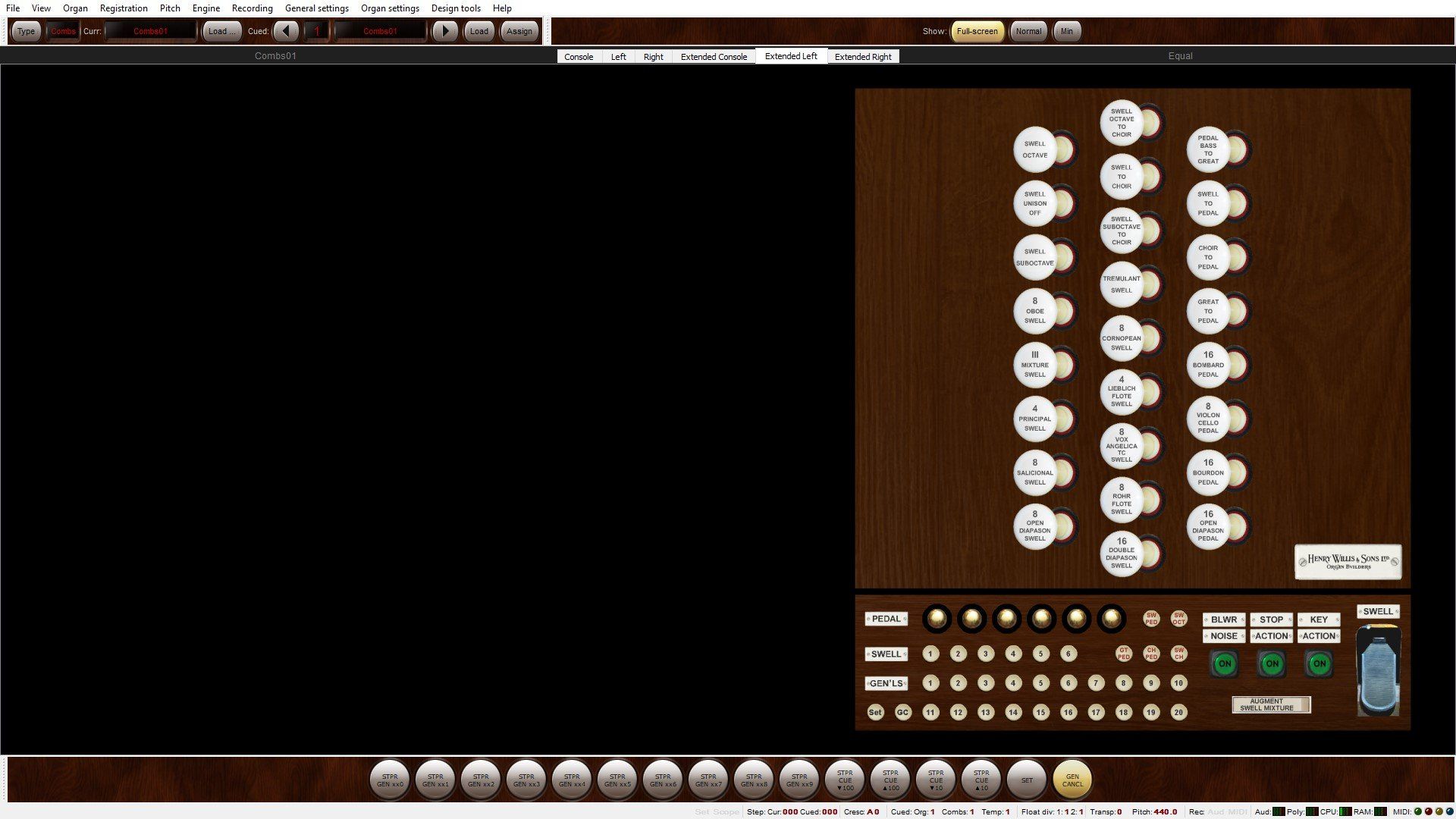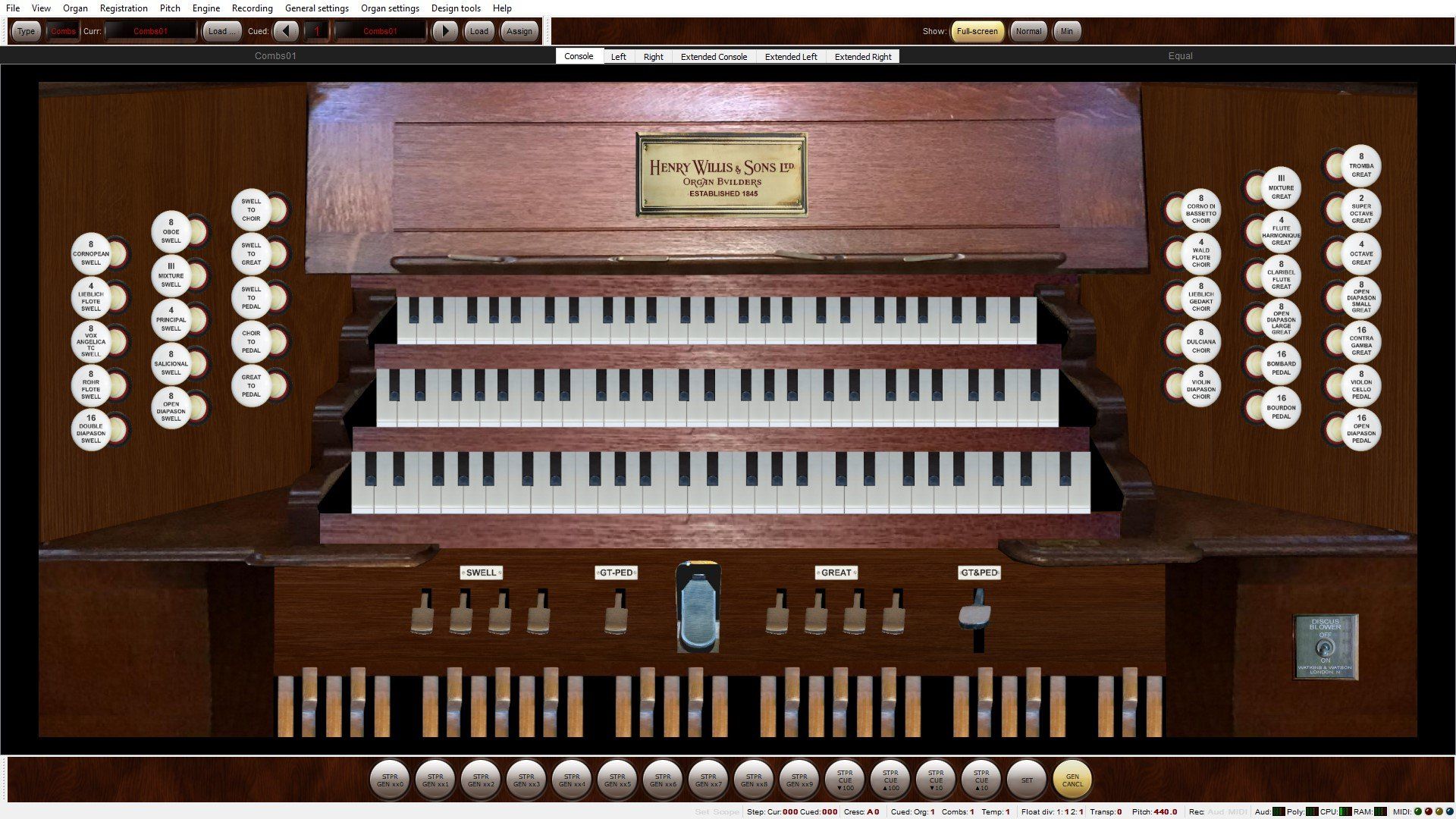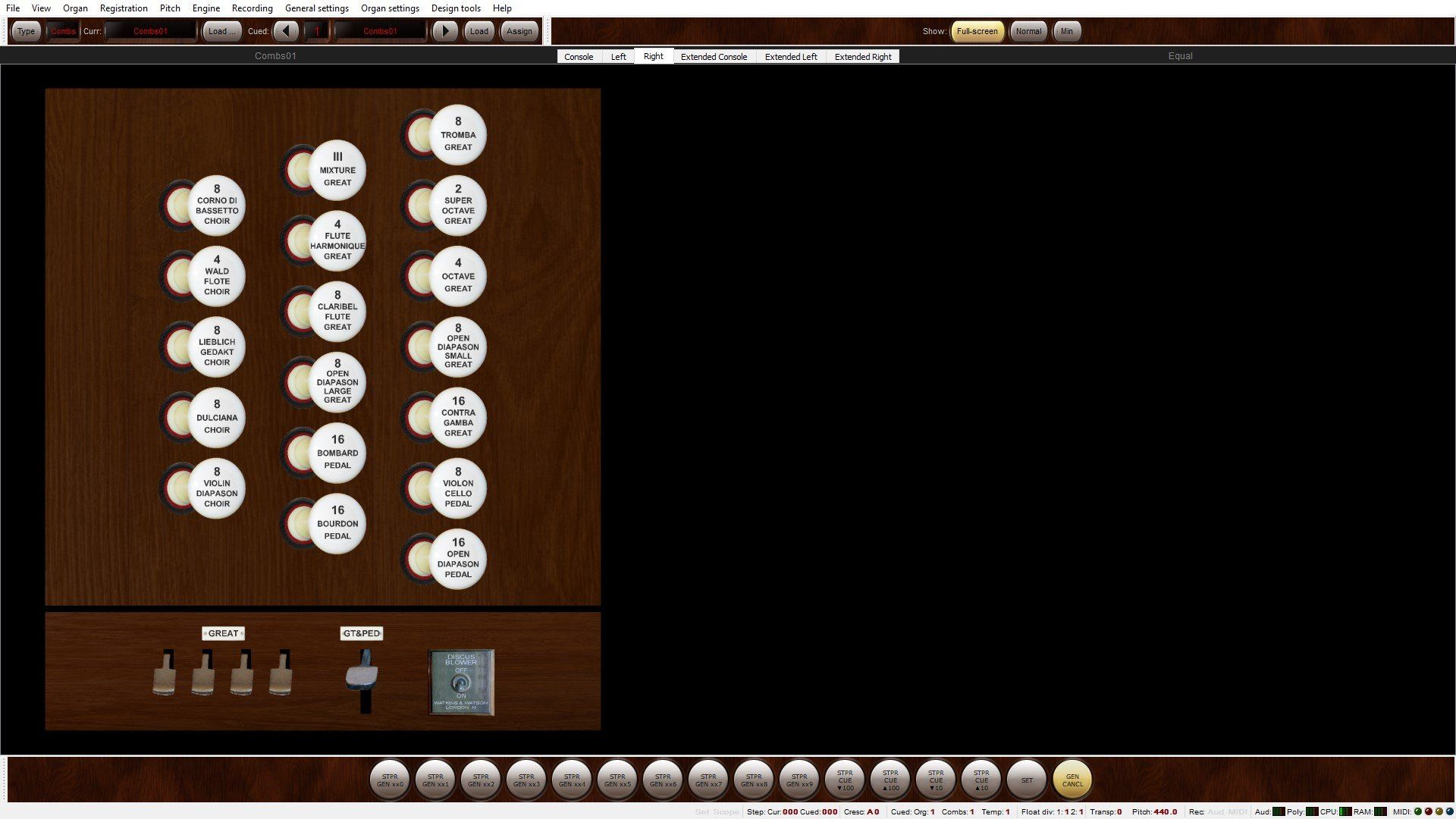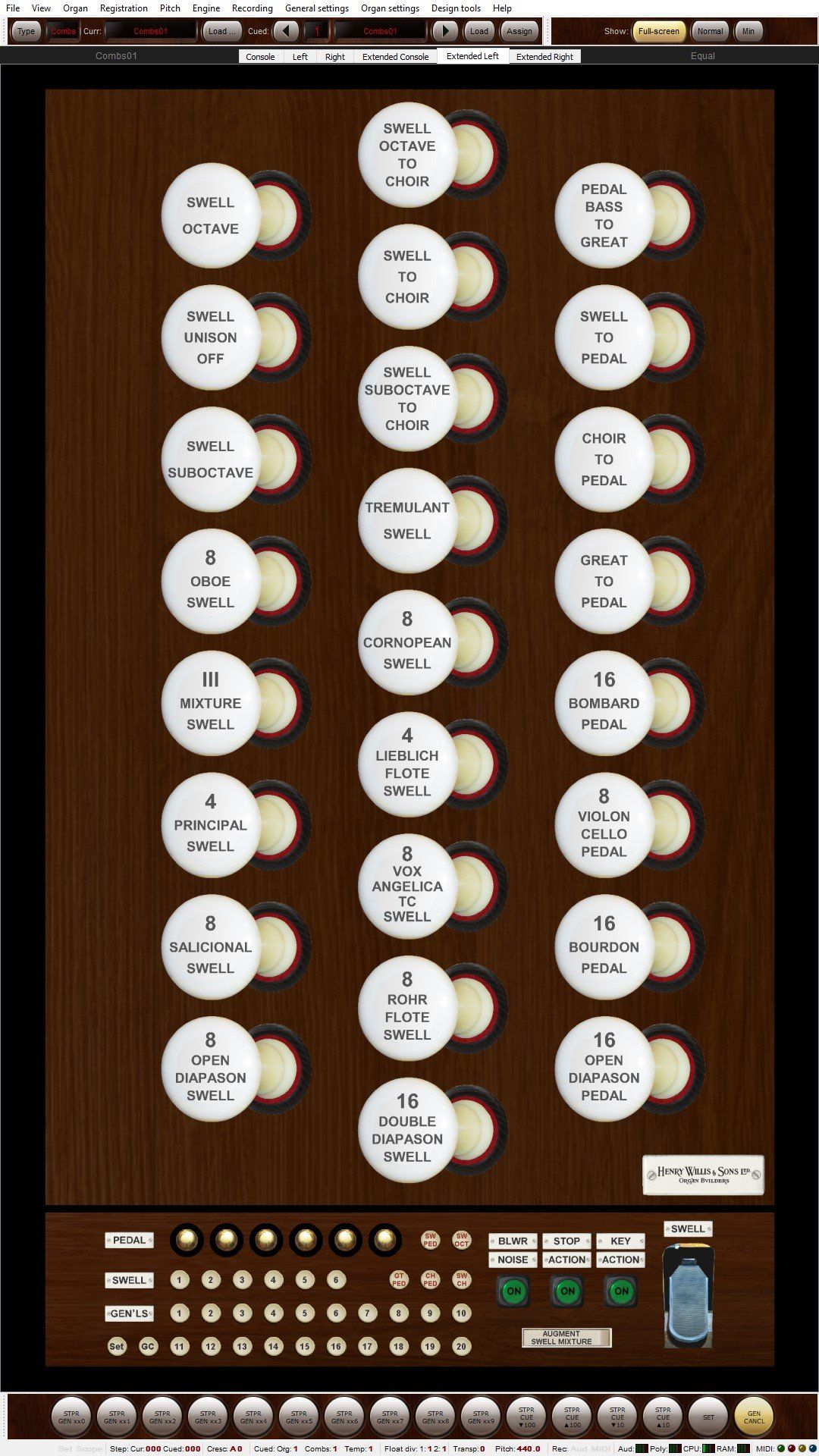Henry Willis 1894Available for HW IV, V, VI, VII & VIII
28 Speaking Stops, 32 Independent Ranks
1688 pipes extended for HW to 61 & 32 note compasses.
Includes original single sample mixtures plus new additional individual rank mixtures
Single dry, close recorded perspective.
This organ dates from the late period of Father Willis and was constructed shortly after the church was built in 1886-1888. The instrument is installed in a generous organ chamber on the left hand side of the nave and has a similar case design to many other Father Willis instruments. A side case containing the pipes from the Pedal string stop is situated at right angles to the main case which contains the majority of pipes from the Great Double. A considerable number of Willis instruments were built in the area and this example is fairly typical of their middle sized instruments of the time. Thanks to the riches generated by the Lancastrian cotton industry, many churches in the region were able to choose from the foremost builders of the time possibly with a view to "one up-manship". Sadly many are now gone due to church closures including one of the largest and finest four manual Father Willis church organs which was in Blackburn. Having been brought up in the area, I was familiar with many (including the latter) and of course, this particular instrument which is in the small town of Longridge. There are still a number of other Father Willis instruments in the vicinity but many have been rebuilt and altered over the years, so this one is quite special.
The organ consists of three manuals and pedal with the console "en fenetre" and remains unaltered tonally. General tuning and maintenance was carried out for many years by Laycock and Bannister of Crosshills, Keighley. The only alterations that were carried out during their tenure was the replacement of the pedalboard and the conversion of the swell pedal to a balanced form. However, I suspect that the two mixtures may well have been Tierce mixtures originally which was usual for Willis whereas in the current instrument they are both Quint mixtures. However, if this was indeed done then it was probably undertaken sometime during the early part of the last century.
The swell Mixture is unusual with regards to its composition. It starts as a 12:19:22 in the bass and breaks back at D#/E (63/64) to become a straight forward C-G-C structure of 8;12;15. This continues for an octave to D#/E (75/76) where it breaks back to a C-C-G pattern as a 1:8:12 setting. Quite odd but it seems to work but I really can't quite see the logic behind it.
Otherwise, the specification follows a fairly standard pattern for an instrument of this size and represents typical Willis thinking. The Great organ speaks for itself and is straight forward. The Swell organ is slightly unusual in that there is a 4' Flute and the expected Lieblich Gedeckt is a Rohr Flute 8'. The typical two reeds combine with the Double Diapason (a Bourdon) and the mixture to provide a "full Swell" effect but there are no Octave couplers most likely due to the 56 note compass. Typically, there is no separate 2'. The Choir organ provides alternative soft voiced accompaniment stops with a 4' Wald Flute to provide a mini chorus plus the normal Corno di Bassetto 8' as a solo stop. The Pedal Organ has the ubiquitous "Big Boom and "Little Boom" registers plus a Viola 8' which provides additional colour to both and finishes off with a typical Bombard 16' to underpin the plenum. There are no tremulants.
The instrument although not very well known, is well respected by those that do know it and is considered to be a very fine example of its type. Considering the relatively small number of stops (just 28), it is capable of producing a fine typical English plenum as well as being able to handle the majority of organ works successfully.
A full grant supported restoration was carried out in 2002 where the pneumatic action and bellows were renewed and the pipes cleaned along with other necessary repairs. However, no other alterations were carried out leaving the instrument as it would have been originally (apart from the possible changes to the mixtures above). Otherwise, the only slightly negative aspect of the restoration is the blower - an old Rockingham model of huge dimensions which really should have been replaced by a smaller, quieter modern one.
The acoustics of the church are not huge and have been further slightly reduced from what they once were some years ago by the fairly recent construction of a vestibule / meeting room at the main entrance to the church.
In order to extend the instrument slightly, I have added octave and sub octave couplers to the Swell and Choir and enclosed the Choir division. The manuals have been extended to 61 notes and the pedal to 32. I have included a Pedal Bass and Melody couplers to both the Choir and Swell together with an increased number of playing aids. I have also added tremulants to the Swell and Choir. This of course does not detract from the overall sound of the organ which remains unaltered and has no other additions. It is thus an accurate facsimile of the original. There are two console views; the first reflects the layout of the real instrument (together with 56 note manuals and 30 note pedals) and the second extends the compass and adds the extra couplers and other features.
Olivia Nagioff has kindly created the photo graphics and has done an excellent job in view of the fact that I do not have original photos of the instrument.
The initial release is presented close sampled and dry. A wet edition is currently in preparation and is nearing completion. I am not sure at the moment as to how this will be presented in conjunction with the close sampled set - whether it will be presented as two different perspectives in the one instrument or whether it will be presented as two different instruments
The specification is as follows:
Great Organ
Swell Organ
Choir Organ
Pedal Organ
Couplers
Accessories
Sound Demos
The demos below are of the close recorded dry instrument with convolution reverberation
£125.00
Please email me if you need the HW IV version
There are a few ContreBombarde performances available of this instrument including those above. Whilst the James Flores Crown Imperial presents the instrument as typically romantic Willis with a moderately large reverberation setting, the recording by Jeff McConnaughy at Contrebombarde.com Concert hall shows a totally different sort of sound which is almost like that which might almost have been produced by an instrument from 100 years before. There are also four different reverberation perspectives of Parry's "Ye boundless realms of joy" as performed by Mirch which can be found on the Blog page under the February 1st. entry.










